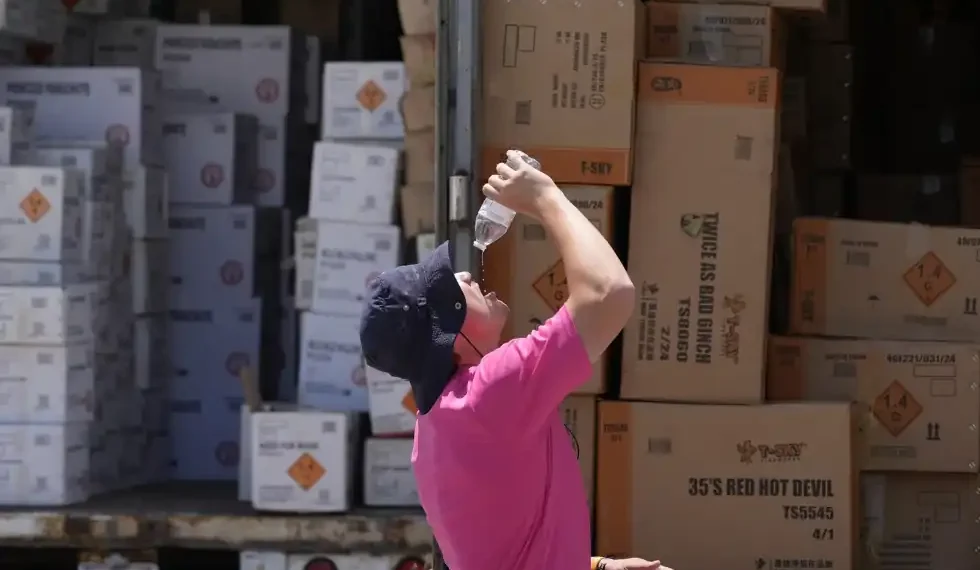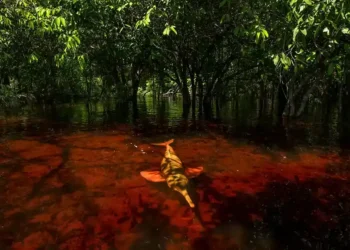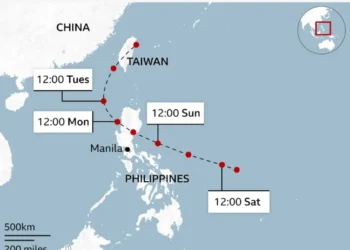Get Ready, America: A Sweltering Heat Dome Is Taking Over Much of the Country
Summer isn’t easing in quietly this year — it’s showing up with a bang.
A massive heat dome is expected to blanket much of the U.S. this week, bringing oppressive heat and humidity to millions from the Midwest to the East Coast. For many, this will be the first taste of true summer weather — and it won’t be a gentle one.
The Midwest Is in the Hot Seat
This weekend, states like Nebraska, Illinois, Iowa, Wisconsin, Missouri, and Kansas are bracing for the worst of it. The National Weather Service (NWS) is warning of extreme temperature impacts, especially in parts of the Midwest where “category 4” risk levels — the highest on their heat scale — are expected.
That means anyone without access to cooling or proper hydration could face serious health risks, including heat exhaustion or heat stroke.
“We’ve heard a lot of people asking, ‘Where’s summer?’” said Tom Kines, meteorologist at AccuWeather. “Well, buckle up, because it’s coming.”
What’s a Heat Dome, Anyway?
A heat dome forms when a high-pressure system settles over an area and traps hot, moist air beneath it — essentially creating a giant lid on the atmosphere. That trapped heat keeps baking the region for days, sometimes even weeks.
“It acts like a pressure cooker,” explained Ricky Castro of the National Weather Service in Illinois.
And it’s not just the temperatures. The humidity will make it feel even worse. While thermometers may read 90°F (32°C) or higher, the heat index — or “feels like” temperature — could be 10 to 20 degrees hotter in some places.
How Hot Will It Get?
Here’s a preview of what to expect across some major cities:
- Denver could hit 100°F (38°C) by Friday
- Chicago is expected to reach 96°F (36°C) on Sunday
- Washington, D.C. may spike to 99°F (37°C) by Tuesday
- New York City’s Central Park could hit 96°F (36°C)
Nighttime won’t bring much relief either — temperatures will hover in the mid-70s°F (mid-20s°C), giving bodies and buildings little chance to cool down.
Humidity Makes the Heat Even More Dangerous
The real trouble with this kind of heat? The humidity.
When it’s humid, sweat evaporates more slowly, which means your body can’t cool itself as effectively. This raises the risk of dehydration, heat exhaustion, and heat stroke — especially for vulnerable groups like older adults, young children, and those with chronic health issues.
To stay safe, the NWS recommends:
- Staying hydrated
- Wearing light, loose-fitting clothing
- Avoiding direct sunlight
- Spending time in air-conditioned spaces
Dry Heat vs. Humid Heat
Not all heat is created equal. Cities like Phoenix, Arizona, experience what’s called dry heat — extremely hot but low in humidity. While sweat evaporates more quickly in these conditions (which helps cool you down), it can also be deceptive. You may not realize how much fluid you’re losing.
“You can get dehydrated fast without noticing,” warn experts at Johns Hopkins University.
Even the Cornfields Are Sweating
Believe it or not, crops contribute to humidity too — especially in places like Iowa.
Farmers call it “corn sweat.” When temperatures rise, corn plants release moisture into the air to cool themselves down. It’s not the main driver of Midwest humidity (most of that comes from the Gulf of Mexico), but it does add to the steamy conditions.
“It’s not as bad as a sauna,” said Ryan Marquardt, a farmer in Madison County, Iowa, “but it definitely has a sauna effect. It’s humid in there, so you’re gonna sweat.”
Final Takeaway
This incoming heat dome is no ordinary summer heatwave. It’s shaping up to be intense, long-lasting, and potentially dangerous. Keep an eye on local forecasts, look out for vulnerable neighbors, and take steps to protect yourself — especially over the weekend if you’re in the Midwest.
Summer has arrived, and it’s not playing around.
This article was rewritten by JournosNews.com based on verified reporting from trusted sources. The content has been independently reviewed, fact-checked, and edited for accuracy, neutrality, tone, and global readability in accordance with Google News and AdSense standards.
All opinions, quotes, or statements from contributors, experts, or sourced organizations do not necessarily reflect the views of JournosNews.com. JournosNews.com maintains full editorial independence from any external funders, sponsors, or organizations.
Stay informed with JournosNews.com — your trusted source for verified global reporting and in-depth analysis. Follow us on Google News, BlueSky, and X for real-time updates.













